Is Solar the Solution?
The warmer weather is here and, with it, solar energy is on my mind. Sun-thing tells me I’m into something good. Join us in the first of our series of programmes on renewable energy sources as the world faces a difficult energy challenge and the threat of an ‘apocalyptic’ food shortage crisis. We’ll be speaking to some of the players, big and small, in the solar industry in this country and around Europe, all with the shared goal of trying to build a sustainable future in which nobody is left hungry and cold either this winter, or in the coming years...
In this episode
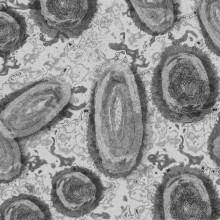
Monkeypox in the UK
Linda Bauld, Edinburgh University
Julia - Over the past week, over a hundred cases of monkeypox have been reported worldwide, including 20 cases, so far, picked up in the UK. This is a virus endemic to parts of central and west Africa. It’s naturally carried by rodents, like mice, but can occasionally jump the species barrier and infect humans and monkeys.
Cases periodically crop up here when people travelling to the UK bring the infection with them. The incubation period is a week or two, and most people have a mild illness that lasts about a week which is characterised by a fever, muscle aches, and blistering rash, although in a small percentage of cases the infection can be lethal. People are infectious while they are symptomatic and the disease spreads through close contact with cases.
One of the UK patients had a travel history to Africa, but the remaining cases do not, suggesting that transmission is occurring in the community. One notable observation is that most of the documented cases in western countries are occurring among men who have sex with men, suggesting that these people may be at particular risk of catching the infection and need to be on the look out.
Here to bring us up to speed with the measures that are being taken to investigate and halt the outbreak is public health expert Linda Bauld. Linda…
Linda - Well, Julia, as you were saying, normally these cases are travel linked, but we picked up a case on the 7th of May. That was an individual who had a recent travel history to Nigeria. But then, on the 14th of May, two further cases with no known links to the case that was picked up on the 7th of May were reported. Those two cases were individuals from the same household. After that, we've seen several more and it's increased since then up to 20. That means we've got a cluster of cases in the community, primarily in England, where they're not linked necessarily, and it means there is community transmission. There's now 15 countries that have identified cases. This is very unusual given the pattern of this disease in the past. It suggests that there may be more cases out there and we're going to pick them up through contact tracing?
Julia - How is this being investigated? Is it similar to the sort of ways we look for Covid 19 in the population?
Linda - There's two main methods that we use in public health. The first one is, we need to investigate. That's lab based studies once we've identified people who have a virus. Secondly, through then trying to trace their contacts -which everybody's now familiar with, the phenomenon of contact tracing, we all know about that from Covid. Essentially, the investigations are happening when you are able to take samples from those who have the infection, that's through biochemistry, haematology and also microbiology. There's a lab which we normally use for this at Porton Down, that's a designated diagnostic lab or two. They'll be looking at that and they'll also be doing, I think, as we've already seen from Portugal, genetic sequencing to see if is this the same as the virus we've normally picked up in Africa, or is it different?
Linda - The Portuguese have already released some data on that suggesting it doesn't look like the virus has changed. The second part is contact tracing. The UK health security agency has already published their standard protocol. They've got people who go from highest risks - that might be very close bodily contact or the same household - to those who are at less risk. Less risk might be people who, for example, have been in the same place as someone who's infected or, alternatively, colleagues in the lab or who are doing investigations, who are fully protected through PPE. But if, for example, they have droplet exposure you may be wearing a glove and there's a small hole in the glove and you're then concerned about exposure, they would be a risk as well. We'll be using that for the next little while.
Julia - And what is the management plan for this type of virus?
Linda - Monkeypox infection is usually a self-limiting illness and most people recover within several weeks. That's a really important point to emphasise. As you were saying, severe illness can occur. What we're doing at the moment, my colleagues, is supporting the people who do have symptoms. That might begin with a fever, a headache, muscle aches and then, as people know now, as seen reported in the media, what normally happens is you then have a rash and these pustules emerge. What we're doing in terms of treatment is mainly supportive. People can be treated for the symptoms and then there's another really important arm of this and that's vaccination. We have a vaccine that is originally created for smallpox, and it can be used both pre and post exposure, so even if people already are infected, they may actually be offered this vaccine. More importantly, the contacts for doing something called ring vaccination, which means that you give the vaccine to the people who are close contacts and that may prevent them from developing severe symptoms. And then finally, of course, tried and tested public health, again in settings or groups where we might have people who are at risk, hand hygiene is really important because this is not the same as COVID, it's not an airborne virus, it's a virus that transfers to close contacts or through droplets.
Julia - As you mentioned, this has been in the news a lot. I think at the minute, we're all very sensitive to hearing this is a new virus and it's potentially in the community. Is this situation going to escalate or have we caught it in time?
Linda - Well, the whole international community working on this is very alert. I think we really need to recognise that because it's normally symptomatic transmission, we can be reassured. We will pick up the cases. And, in fact, the populations as you were discussing, men ages 20 to 50 who are coming forward, they're a group who are good at picking up if they have a rash or symptoms and at seeking support. don't know how many cases we'll find. Just to give you one example, from contact tracing that's happened, out of 50 contacts, only one of them might have picked up the virus. So, we're really looking at something that is A) more easily identifiable than the asymptomatic transmission from COVID and B) that we know how to manage it, and we have an effective vaccine. We're all looking at this with great interest, but I don't think we should be panicking. I think we should be reassured. And certainly in the UK, the UK health security agency is releasing very good information on a regular basis.
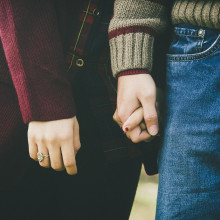
06:46 - Spotting the signs of bowel cancer
Spotting the signs of bowel cancer
Sibu Varghese, Cambridge University
Julia - Over the last couple of weeks, Dame Deborah James has raised over 6 million pounds for cancer charities. She launched the fundraiser after announcing publicly that she was receiving palliative care because her own bowel cancer was no longer responding to treatment.
She's undoubtedly also very much shone the spotlight on a disease that is unfortunately very common but discussed too little. Luckily we do have a screening programme across the UK that has been a big success story. Chris Smith went to see consultant gastroenterologist Sibu Varghese, who is part of that initiative, to find out a bit more about bowel cancer, including the warning signs you should be aware of...
Sibu - The main symptoms to look out for are blood in the poo. The other thing is a change in your bowel habits you can't explain otherwise. If your stools or your bowels are more frequent, more loose, and also things like tummy pain, abdominal pain discomfort, and also unexplained weight loss. These are the key symptoms to look out for.
Chris - And who's at risk?
Sibu - We don't know the exact cause of bowel cancer, but there are certain risks to look out for. One is age; nine out of 10 people with bowel cancer are over the age of 60. There are other risk factors like your diet, being overweight, lack of exercise, smoking - and also if there's a strong family history of bowel cancer.
Chris - And, as cancers go, is this one becoming more common/becoming less common? Are there certain sectors of society among whom it's a particular problem?
Sibu - It is definitely one of the most common causes of cancer in the UK. I would think in the third or fourth place, and it can be a deadly cancer if diagnosed quite late. The incidence is increasing and that's the feel we are getting at the moment, yes.
Chris - Tell us about the screening program. Because that has been going for 15 years or so?
Sibu - Yes, we've had a screening program starting in 2006 in England. It is available for people over the age of 60. Between 60 and 74. We are looking at gradually lowering this age group to the fifties as well. You get sent a stool kit, which is quite simple kit to do. It's a plastic tube that you test your poo for any traces of blood. And if that's the case you're invited to discuss about having a colonoscopy to look for any polyps or sometimes cancer as well.
Chris - That's the next step is it? You'd call someone back and then physically take a look inside to see if you can pinpoint the cause of that bleeding?
Sibu - The first thing would be to have an appointment with one of our specialist screening practitioners where we discuss their health in general and discuss whether a colonoscopy would be appropriate.
Chris - And what's the intervention after that, if you do find someone's got bowel cancer, what happens next?
Sibu - It's the unfortunate part. What we tend to do is encourage them that this is something we're picking up early. We then refer them onto the specialist team which involves surgeons and cancer specialists with regards to treating this and taking care of this.
Chris - And because of earlier pickup, because of things like screening, is that translating into a drop in the mortality from bowel cancer? We're diagnosing people with it, but we're treating them and potentially curing them more. Is that actually happening? Is it bearing fruit?
Sibu - It's very difficult to interpret this data. I think we're definitely making a difference because I do a lot of the colonoscopies and I can see that we're detecting things early, but also there's an increase in the incidence of cancers as well. It is difficult to sort of analyse this data more, but definitely we are making a plateau in terms of the incidence of cancer. And obviously people are surviving longer if they're treated early. IT is definitely making a big difference
Chris - The age at which this is kicking in, though, I know you've said the aim is to lower that a bit, nevertheless, Deborah James, who we've heard a lot about in the last couple of weeks, she would've been totally outside the scope of that screening window, wouldn't she?
Sibu - Yes. The number of people who get cancer very early, like her, you know, in her thirties, it's very small but, understandably, that's an important group. I think the only thing I can say with the younger age group is obviously to look out for symptoms as I mentioned and, number two, if you've got a family history of bowel cancer, a close relative, your father, mother, brother, or sister who has had bowel cancer under the age of 50, it would be important to talk to your GP about that because there would be a case of doing what's called surveillance or screening for bowel cancer with a colonoscopy much earlier on in this group of people.
Chris - And overall prognosis if someone is diagnosed with bowel cancer? What's the likely outcome?
Sibu - It all depends on how far advanced it is or what stage it is. If it is in an early stage, which is what we hope for, and it's limited to the bowel, essentially, an operational surgery to remove that bit of the bowel will cure the person of that condition. But, if it is quite advanced, we still have a lot of good treatment, but if it very advanced then, unfortunately, sometimes people don't survive. Obviously, the earlier you know about it, the better.
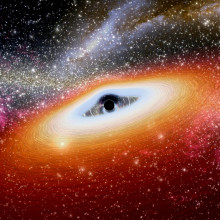
11:56 - Milky Way's Sagittarius A* Black Hole Imaged
Milky Way's Sagittarius A* Black Hole Imaged
Ben McAllister, Swinburne University of Technology
Over 100 years ago Albert Einstein predicted the existence of black holes: regions of the Universe so dense, with gravity so strong, that nothing - not even light - can escape. Whilst we’ve been pretty sure that black holes exist for a long time, it is actually only fairly recently that we’ve been able to see them. You might remember back in 2019 when an international collaboration of scientists released the first ever image of a black hole. It was captured with a device called the Event Horizon Telescope. This first black hole was 55 million light years away and huge, two factors that made the job a little easier. But now the same team are back, and they’ve pushed the envelope to show us what our own galaxy’s black hole looks like. Physicist Ben McAllister has the story…
Ben - Picture a vast, spinning galaxy, our home - the Milky Way. Billions of stars, spread across thousands of light years of space, rotating around a central point. At that central point, we now know lies an extremely large, extremely dense object: a supermassive black hole. And we know this because we’ve actually seen it.
Or rather, we can’t actually see the black hole itself - it’s completely dark because no light can escape - but we can see its ‘shadow’ - a dark region surrounded by a bright ring of glowing gas just far enough away, and travelling just fast enough, to avoid being pulled in.
But, I’m getting ahead of myself. The Event Horizon Telescope collaboration - made up of hundreds of astronomers from all over the world - has recently revealed the first ever direct image of the supermassive black hole at the centre of our galaxy - called Sagittarius A-Star, about 4 million times the mass of the Sun. This is an astonishing feat, following up their similar work a few years ago, imaging a much larger black hole in a neighbouring galaxy.
So, how do you take a photo of something completely dark, 27,000 light years away? You need an exceptional telescope - or, in the case of Event Horizon, eight telescopes, distributed across the planet and all working together, “meshing” their data. Essentially, Event Horizon creates a ‘virtual telescope’ the size of the Earth.
The data used to make this new image were actually collected back in 2017, around the same time as the data for the last black hole image, but it’s taken longer to process. Since our own black hole is about a thousand times smaller than the last one, the fast moving gas which orbits it does so in a much shorter time frame, and so the image is changing a lot more rapidly, making the data processing more difficult.
Nevertheless, the researchers were stunned with how well the image agreed with Einstein’s predictions - made about 100 years ago - and said that these observations added to a deeper understanding of how these truly amazing, extreme cosmic objects behave.
It’s also incredible to think that the0. light the telescopes were imaging from the gas around Sagittarius A-Star has been travelling for 27,000 years across space to reach our network of radio dishes, distributed across the planet, and that astronomers can combine all that data to form a handful of beautiful, albeit slightly blurry images.
The Event Horizon team isn’t stopping there though! They are already working on new data processing techniques to improve the pictures, as well as telescope upgrades to take sharper images, and maybe even real-time movies.
So whilst we haven’t replicated Christopher Nolan’s ‘Interstellar’ just yet, we might not be far off seeing a real-life black hole on the big screen!
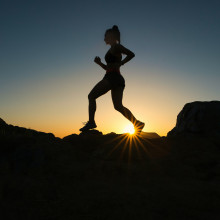
16:29 - Running may boost beneficial brain changes
Running may boost beneficial brain changes
Margaret Rice, NYU
As the days grow longer and the weather gets warmer, you may notice more people out on the roads enjoying a jog. If you've ever pounded the pavement, you may have experienced "Runners high" - an almost euphoric state, which precedes a period of pacing. Now, researchers at NYU have given us a better idea of what is behind this and the other beneficial impacts of exercise. Julia Ravey covered this story and thought it would be interesting to explain it whilst running. So let's see how she fared...
Julia - I'm out on a jog today and I'm going to be honest, I'm not the biggest fan of running when I'm doing it. But afterwards, I always feel amazing. And this is potentially from alterations to chemicals in my brain. Margaret Rice, from NYU, studies this process, and those benefits go beyond just feeling good...
Margaret - Among the beneficial effects are improved motor activity, this is known in Parkinson's patients who exercise. Exercise also improves symptoms of depression and of anxiety.
Julia - But the exact changes which occur are still under investigation. So Margaret and her team wanted to explore exercise's impact on the brain.
Margaret - We put mice on running wheels and compared them to mice that were housed with a running wheel, but that was locked. And then we allowed these two groups of mice access to the wheel for 30 days. We examined the brains for dopamine, which is an important neurotransmitter in motor and reward pathways. And we looked at brain derived neurotrophic factor (BDNF), which promotes growth of neurons, survival of neurons. And we found that there was no change in dopamine levels, but that brain derived neurotrophic factor did go up in motor regions of the striatum.
Julia - The striatum is a brain region buried deep in the brain, sort of on the level of the ears and eyes - where they'd crossover. It's important in moving and also in detecting reward. Running also has a longer term impact on activity in this region.
Margaret - The change in BDNF was not particularly prolonged, but what we found was that dopamine release in brain slices from these mice was enhanced. This wasn't just an enhancement in the motor region, but also in reward regions of the striatum and those effects persisted for at least seven days, for a week, after we stopped the mice from running.
Julia - And it looks like BDNF and dopamine interacted in these events.
Margaret - We did look at mice that have half the levels of BDNF and we found that in those mice, there was no elevation of BDNF with running, and there was no increase in dopamine release.
Julia - A disorder caused by the loss of dopamine is Parkinson's disease, when neuron's making this chemical die. And in mouse models mimicking this condition, BDNF has been implicated in protecting brain cells, meaning boosting its levels via exercise...
Margaret - ...could help protect the dopamine neurons as well as to boost release from the remaining dopamine neurons.
Julia - So exercise could provide benefits in early stage Parkinson's disease. And in terms of a "runners high", this long-lasting impact of dopamine signalling could contribute.
Margaret - It's already been shown that dopamine release goes up when rodents run anyway, because it's a motor pathway transmitter. And so part of our motor behavior requires dopamine.
Julia - That's brilliant. I went on a run today and I always feel much better after I finish. I just feel so much happier, my mood is boosted and I have a much clearer head.
Margaret - Right. And I find that to be enduring. And I think that could be some of the long-term effects that we see from dopamine as well as the other beneficial effects on other transmitter systems that I'm sure occur as well.
Julia - So it looks like exercise gives our brains a boost, both in terms of feeling good, via dopamine release and could even help protect our brain cells. So pick your favorite exercise could be running, dancing, walking, anything you want and get moving.

21:37 - Mind games increasing in sports
Mind games increasing in sports
Assaf Lev, Ono Academic College
In the world of sport, there is something of a blurry distinction between doing everything in your power to win the game fairly, and bending the rules to give yourself an advantage. The ongoing Wagatha Christie court case proves that these tendencies can sometimes spill over into the families of professional athletes as well. Now a new study looking at the action going on in a very different type of court, a basketball court to be precise, has been observing the frequency of acts of violence during match play over time. Assaf Lev, a former professional player himself, is now a Sport and Exercise Anthropologist at the Ono Academic College in Israel. He wanted to see what the consequences of stricter rules against violent physical actions in the NBA, the world’s top basketball league, might have had on other behaviours; actions seeking to hand the perpetrator a psychological advantage. James Tytko asked him how he made the journey from athlete to academic…
Assaf - As a professional basketball player, I always wanted just to know a little bit more. I was fascinated by the conflicts and physical aggression as part of the game, but I didn't really have the tools. Today being a sports and exercise anthropologist, I can look at things differently.
James - I think it's really cool that your job exists; trying to get to the bottom of why sport energises people in the way that it does. Not because we're just admiring the physical feats of excellence, but the passion and emotion derived from the rivalries and the competition. Because sport can bring out the best and worst in us, can't it? And that's where we come to your study to think about aggression. And your study differentiates between two types of violence; physical and symbolic violence. Can you outline what you mean by those terms?
Assaf - Physical violence. It's the most common type of violence we're talking about - elbowing and pushing, and you can see it on many sports fields. It's a very straightforward type of violence. Symbolic violence is more tricky and we don't really perceived symbolic violence as violence, but in the heart, in the core of this symbolic violence is the intention to diminish or to belittle your opponent. Those little things like body gestures, even gazing him or her differently.
James - The study was keeping track of these two types of violence over a 20 year period in NBA basketball games. Was there something you were expecting to see?
Assaf - I have noticed for years that the physical violence is still there, but it's definitely decreased over the year. And given the harsh sanctions many NBA players face, they think twice before executing any physical violence. But I have noticed that the symbolic violence such as trash talking, crossovers and some slam dunks on the face of the opponents or what, in general, we used to say posterising, it has become such a major "weapon". But then I was fascinated after, where we conducted the paper, delving into the details, the data itself, we were very surprised to see that physical violence is still here. We can see how the more symbolic violence turns down.
James - Is there a sense that less dramatic physical violence we're seeing and the rise in symbolic violence at the same time; is a sport like basketball, just by its nature, an activity in which there is drama, there is violence and maybe that's part of its appeal?
Assaf - All types of violence, all of them are part of the game. Yes. And we see some previous studies showing that the audience, the crowd, they want very like vivid physical contact. This is part of the game. Definitely. I totally agree with you, James.
James - I think everyone in this country who watches football for years will say, oh, the game's gone soft. It's not what it used to be. I want to know how we can find a balance between still encouraging that aggressive side of the game that we all grew up to love, with wanting to mitigate the violence, which we can sometimes see and which we obviously don't want to encourage.
Assaf - We should ask ourselves where we draw the line. And I don't think that I do have a great answer here, I don't. But what I can tell you is that people, again, try, or maybe they're talking about condemning the physical violence, but the symbolic violence, we are encouraging more in the crowd and sometimes on TV, and so on. We do not perceive symbolic violence as something degrading, as something insulting. Every year we see the consequences. It's not only on court, but you can see how it has shifted also on the every day or in the neighborhood or something. Back in the day, it wasn't a big deal, basically, it was nothing. But these days we can see that people are going to laugh at you, people are going to insult you. I think it's a serious matter. And that can cause real psychological harm.
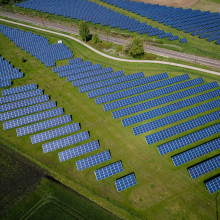
27:49 - Solar farm powering over 10,000 homes
Solar farm powering over 10,000 homes
Dan Bishop and Nicola Crosby, BayWa
We're starting our search for solar energy here in Cambridgeshire, home to one of the largest solar parks in the country, Vine Farm. James Tytko paid a visit to the site and was joined by two employees from BayWa, the German company which built and now maintains the park. He wanted to see the farm action and learn how photovoltaic, or PV, solar panels actually work…
Nicola - It's amazing how big this place is!
James - Yes, I know!
Nicola - Can I just ask you to put that on?
James - High-Vis.
Dan - I'm Dan Bishop, I'm an area manager covering the Midlands area for BayWa.
Nicola - I'm Nicola Crosby. I'm the solar operation and maintenance coordinator for the BayWa operation services team.
James - So the sheep - they're just allowed to graze in and around the solar panels?
Dan - Absolutely. The site's been built with grazing in mind. There's sheep protection built around to stop them damaging any of the infrastructure. And having the sheep on site obviously helps maintain the ground conditions. It stops the grass growing too long - that can shade the modules, which can affect production. If the grass grows too long and dries out in the summer, that can be a fire risk. So having the sheep on site for us is fantastic. The site itself is spread over roughly 200 acres. There are just shy of 150,000 solar modules. What you can see here is a very small percentage of the actual site. It goes way in the distance over there, spread over four fields.
James - And I've read online that this is either one of the biggest solar farms in the country or the biggest solar farm in the country?
Dan - I believe at the time of building in 2015, it was the biggest. But BayWa are building solar farms this year, and I believe we've got one in the pipeline that is going to quite dramatically bigger.
James - How exactly do these sheets of Silicon that we can see as far as the ICS turn sunlight into electricity, which powers our homes?
Dan - These modules they take in solar irradiation from the sun, which is exactly the same thing that gives you a tan effectively. The solar radiation then excites electrons inside of those cells, which generates a DC voltage
James - Direct current?
Dan - Direct current, exactly. The solar modules are then daisy-chained together effectively, in what we call series, which increases the voltage and makes it easier and more efficient for the inverters to convert into AC, which is alternating current. It makes sure that the frequency and the voltage that it's putting out matches the grid, hence it's called a grid-tied solar inverter. And then from there, it converts it to the grid voltage grid frequency, and feeds it back to our private substation, which then feeds it back to the DNO substation, which is district network operator. Each module putting out roughly 350 Watts at peak and in total, that'll give us just shy of 46 megawatts of power. 46 megawatts roughly, give or take, will power on average 11 and a half thousand homes.
James - What goes into maintaining a site like this? What other sort of technology or innovation are you using to keep something like this up and running? I mean, it's so massive as we've described.
Dan - On a site like this, obviously due to the sheer scale of it, things do go wrong. It's inevitable. So the solar inverters, like any other piece of electrical equipment like a fridge freezer in your house, eventually something will break. With regards to the sheep, they are generally very good for helping us maintain the site. Every now and again, they'll find a little cable to have a nibble on.
James - Have you had any casualties?
Dan - We haven't Over 200 acres, we've never had a sheep succumb. As a general rule, the sites are generally very good. The inverters are reliable. The modules, considering the sheer scale of it, we don't have to replace as many as you'd think. So on this site, we may replace maybe 10 modules per year.
James - When the sun's not shining, what's the variation in output of the station? And is it fairly consistent year on year or do you have bad years and good years?
Dan - So naturally you will have years that are slightly higher than others, depending on the weather. But as long as the sun rises in the morning, they'll be producing something. Depending on the level of cloud cover, that obviously will reduce - again, it works on solar irradiation. So the more intense the sun, the more efficiently the system will work. So in the middle of winter, if the sun is out and there is absolutely zero cloud, they will still produce a full amount with the sun slightly lower in the sky. But it'll be pretty much there. Obviously, as soon as the cloud cover comes over with the sun a bit low, yes, it will drop, but it still produces more than you'd expect in the winter.
James - Which is probably surprising to most people.
Dan - Yeah, absolutely.
James - One of the things people often say about solar is it takes up a lot of land and this is land that might otherwise be containing lots of wildlife. There's the debate, obviously around people growing crops, food versus fuel...
Nicola - I think operationally as a company, we're very good at looking at sustainability. We compensate 100% of all our operational and travel greenhouse emissions. We always have a plan in place for wildlife, the badger gates, so wildlife can access the sites. Obviously we've already touched on where you can use the land for grazing for grain and food crops. Obviously this is a big space and the farmers decided to graze here as well, which is really great because it benefits everyone.
James - Farmers presumably leasing out their land to a solar farm is a lot less work for them than growing crops. With the war in Ukraine, people are talking about a food security crisis and, at the same time, having this energy crisis and we're pushing for renewable sources to get to our carbon targets. When is there too much solar that could otherwise be used for other purposes?
Nicola - I think farmers have a challenge, wherever they are, to make sure that they're meeting their own requirements. The country's requirements for food sourcing and, as you said, we've got a challenge with energy as well. And I think that they can quite well achieve a blend of that with their land. The solar power is helping them with keeping their farm sustainable from a commercial perspective, but also still being able to use it for grazing as well and for growing the crops that we talked about. So I think all-in-all, it's a good mixture. Obviously you can't just stick a solar farm just anywhere, not all land might be suitable, but similarly, there are also farm lands that aren't suitable for crops either. So that would be a good alternative to help with the energy crisis to use your land for renewables.
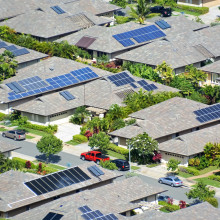
35:56 - The new approach to installing solar
The new approach to installing solar
Andreas Thorsheim, Otovo
Why are we not using all the rooftops available to us already? CEO of Otovo, Andreas Thorsheim, believes that in the not too distant future solar will make up the majority of our household's electrical consumption. Julia Ravey hears how...
Andreas - Otovo is a company that aims to be the easiest and most affordable way to get solar panels on your roof. Otovo is a webpage where you can input your address and get a quote instantly. Then you can just buy the solar panels and maybe a battery for your home online, just as easy as you buy a shirt or a pair of shoes.
Julia - And do you have a way to help people overcome that initial upfront cost of installing solar panels on their house? Because that is pretty expensive.
Andreas - Yes, it is. For the typical household, they'll probably find a five thousand pound investment daunting. And that's why we came up with a product where people can pay a monthly bill. We offer them the opportunity to lease the panels. And the way that works is that you don't have to put up the money up front, but you'd rather pay a monthly bill. And in that way you can save as much as 20% on your electricity bill. A typical electricity bill might be £110 per month. And after you get these solar panels on your roof, you'll pay less than 50 on your electricity bill. You'll have to pay the rental for 40 to 45, and the rest is saving. £20 a month works immediately. So, that's been very popular in Spain and in Scandinavia, we've had this product for a couple of years now and excited to launch this in the UK this summer.
Julia - Yeah, it sounds like the technology is there and the economics are in place for household solar to really kick on. So why do such a minority of buildings in this country, in the UK have solar panels on their roofs?
Andreas - I think it's maybe mostly a question of people not being aware of how great solar panel power is. We started Otovo in Norway in 2016, and it's certainly not the easiest place to make money from solar energy since we have a long dark winter and quite inexpensive traditional energy, but what has happened to the cost of solar energy since we started is just remarkable. We've halved the cost of solar installations in Norway in the last five years alone. And we believe we're going to be able to do that in the UK too. And, we can now save money for people pretty much anywhere in the world by providing solar panels and maybe batteries for their home.
Julia - The EU has just release a plan to make it mandatory for all new buildings to have solar panels installed, during their construction. Are you surprised it's taken an energy crisis, like the one we're experiencing now for this initiative to happen?
Andreas - Yes, I think it's a little late, but we're happy that they're doing it now. We've seen over the last years, both in the UK and in Europe where policy support for solar panels, really increasing and in the UK, you don't pay value added tax for solar installations. And that's a recent piece of policy that just came out here in the UK. So, policy support is there and I think it'll make solar power much more commonplace in the UK in years to come.
Julia - Yeah, it does seem to make a lot of sense really if we're putting buildings up and we want to be more energy friendly to have that in the policy, but one of the things that's really cool about solar is how diverse it is. We can have these enormous solar farms powering thousands of homes via the grid, and then a handful of PV panels on a house's roof that provides the energy for a single family out in a remote part of the countryside. What do you see as the future of solar in the coming years and decades?
Andreas - Well, I think over the next generation, we're gonna see panels come up on pretty much every single roof. And I think maybe a third of the electricity that we consume in households and in commercial buildings will be produced where the electricity is consumed, and the rest will come from nuclear plants and hydro power and wind power, produced centrally. But as much as a third of the energy can be produced at the edges of the grid, it's almost like what happened when computers went from mainframe and you just had computers in universities and now we have them everywhere in the shape of laptops and mobile phones. I think we'll see some something resembling that happening to energy.

41:14 - Morocco: a desert solar case study
Morocco: a desert solar case study
Karim Elgendy
A country which has historically been viewed as pretty resource barren, now trying to harness the potential of the huge amount of sunlight it receives. That country is Morocco, who have a substantial chunk of the Sahara desert within their borders. As it turns out, the road to being a climate leader is not without its challenges. You probably didn't need telling that the Sahara desert gets its fair share of sun. What it might surprise you to know is that if we covered the Sahara in solar panels, we could produce enough electricity to power Europe, 7,000 times over with next to no carbon emissions. Karim Elgendy and Julia Ravey...
Karim - The first issue is the intermittency of solar energy or the fact that electricity is only generated during the day. This requires a significant amount of storage capacity. The cost of the storage or specifically batteries used to be quite high, but it is consistently coming down on a per kilowat hour basis. The other challenge of a technical challenge, and it's a distance between where energy is generated in north Africa and where it is consumed in Europe. And that distance is quite long, which could lead to energy losses in transmission. Dust is also a major issue and high temperatures lead to reduced performance in solar panels, the panels do receive a lot of energy, but high temperatures around them and especially on the surface of the solar panel means that the performances is suboptimal.
Julia - This last factor has led Morocco to invest in solar projects, different from the PV panels that we've been discussing in the show. Another way of generating electricity from the sun is through concentrating the sun's rays into a focal point and using the enormous heat this can generate.
Karim - Concentrated solar power tends to be more expensive than PV, but it's also more economic in terms of energy storage, because batteries were still quite expensive.
Julia - The largest concentrated solar projects in Morocco are Noor I, II and III, Noor I and II are trough based systems with 500,000 parabolic mirrors arranged in rows at angles. So they will direct sunlight towards a tube. In these tubes is a synthetic oil, which is heated up to 400 degrees. This is then used to boil water in a heat exchanger to drive a steam turbine, which produces the electricity. One drawback of the project is when the sun stops shining the plant does have to use fossil fuels to keep that oil hot enough, not to freeze overnight.
Karim - It provides enough storage hours for the energy generated during the day to be used later in the evening, and as close to 24 hours of generation as possible
Julia - Instead of parabolic mirrors in rows Noor III, a system where thousands of flat mirrors are placed in concentric circles around the central 250 meter tall tower, which directly heats molten salt. This acts as the working fluid instead of the oil in Noor I and II. It's seriously, visually impressive. It looks a bit like a space shuttle ready for launch surrounded by rows and rows of shining sheets of glass. For this reason, it has become the poster boy for Morocco's quest to become a big player in clean energy.
Karim - Particularly clean water, fresh water is required in the case of concentrating solar power, and because these mirrors need to be incredibly clean in order to reflect all of the direct radiation that hits it, remember CSB works differently and it only works with direct radiation, not the ambient light in the skies. The water footprint that is required by this is certainly a problem in a country such as Morocco, where water is becoming increasingly scarce. And also the desalination environmental footprint becomes an inhibitor and an additional cost on such projects. So there's a certain balance to be made here between the water footprint, which has in some cases, an energy and a carbon footprint, and the benefits to be made out of renewable energy.
Julia - Another problem comes with trying to transport all that clean energy from Morocco to Europe.
Karim- Morocco exports excessive electricity to Europe via cables, which go through Spain, but there are new plans by a UK company called Xlinks to export electricity directly from Morocco to the UK, to Devon directly via sea cables. The project's quite unique, actually it aims to develop more than 10 GWh of new solar and wind farms, on an area that is the size of a city as big as Edinburgh to use 20 Gigot hours of battery storage in order to condense these 10 GW into 3.6 GW of constant power. So basically using batteries to deal with intermittency as the cost of batteries has come down. This is now viable to do without government subsidies. The transmission losses will also be minimized by using direct current rather than alternative current in the section between Morocco and the UK. According to the proponents of the project, it could provide 8% of the UK energy needs, electricity needs rather, that suggests that batteries have now come down in cost enough to make up for the intermittency issues and to provide constant power that can be used for base loads. It's competing with fossil fuels and also competing with nuclear.
Julia - These amazing feats of engineering are a marvel to even think about, but Karim has doubts as to whether Morocco alone holds the key to getting us out of the world's current energy predicament.
Karim - Morocco does have very ambitious plans to increase its renewable energy capacity so that they represent 52%, more than half of its total electricity generation capacity by the end of this decade, so 2030. It is about 10 GW of renewable energy capacity by 2030. So 10 GW, remember that is quite a small amount of electricity generation that is required for Morocco, because Morocco's energy needs are quite limited. Compare that to 580 GWh, which is what Europe and the UK need currently. This is the amount of electricity that is sourced from non-renewable sources. So yes, 10 GW would be nice. Yes, that would help, but it will certainly not fix Europe's problems.
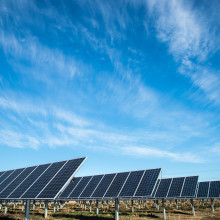
48:54 - Using the power of the sun... twice.
Using the power of the sun... twice.
Richard Randle-Boggis, The University of Sheffield
One of the big benefits of solar energy is that it can provide for a very diverse set of energy needs, as we’re going to hear from our final guest on this week’s show. Richard Randle-Boggis from The University of Sheffield is working with collaborators in Kenya and Tanzania on Agrovoltaics, technologies which aren’t just providing solar energy to remote communities, but may not repurpose land currently used for food production. James Tytko reports...
Richard - Agrovoltaics is actually a pretty simple concept. It's combining agriculture with photovoltaic. So when you visited the solar park, you mentioned the food versus fuel land use crisis those conflicts that we're seeing with developing solar parks. And so what we do with Agrovoltaics is raise the panels up so that you can have agricultural activities underneath and you space the panels apart to let enough sunlight through to the underlying crops. And what that means is that you're getting renewable energy without losing the crop land.
James - It must be quite tricky to balance between making sure the solar panels are receiving enough sunlight to produce a good amount of electricity. And also that the crops are receiving enough light to produce enough food for themselves. How do you manage that?
Richard - Yeah, so it's really important that the Agrovoltaics systems are designed depending on the local context. So in Northern Europe, for example, it is a bit more of a conflict for the light from solar panels and for the crops, but in other places, for example, where I'm working in east Africa and in tropical regions where there's plenty of sunlight it's actually a benefit to partially shade the crops underneath. Whereas if you are in Northern locations, then you need to space the panels apart a bit more. There's also tilting panel technologies, which can tilt the panels away from the sun to let more sunlight through to the crops. But of course that comes at a bit of a cost to electricity production.
James - And if we think first just about those projects you're working on in Africa, what results are you seeing from installing Agrovoltaics in these remote arid communities?
Richard - Well, it's actually really exciting because what we're seeing by partially shading, the crops is that we're reducing water loss from evapotranspiration. We are reducing temperature stresses and UV stresses. And so we're actually increasing the yields of some of the crops that we've grown. We're in the early stages of our studies at the moment. So we need more time to study more crops over a longer period of time. But from one harvest season that we've had so far with cabbages, the cabbages were actually 21%, larger than in the open field control system. So not only are we getting the low carbon and local and also off grid electricity, but also increasing the crop yields as well. And something else I wanted to mention was that you also mentioned about the issue with the temperature affecting the electricity generation. One of my collaborators in the university of Arizona has seen that by raising the panels up and having the crops underneath the solar panels are actually slightly cooler than conventional ground mounted panels as well, increasing their electricity generation. So actually it's benefiting both the food yields and also the electricity production
James - And these communities in Africa where there's a lot of off grid electricity needs is really providing a benefit.
Richard - Yeah, absolutely. So more than half of the population of east Africa. So that's more than 200 million people don't have access to electricity. They're not connected to national grids. And those that are connected to national grids also have issues with blackouts, with the grid being unreliable. And one of the wonderful things about solar technology is that you can provide a range of different scales in many places around the world, which means that you don't need to be focusing on expanding national grids. And you can actually work on off grid and mini grid systems. And this can apply both for Agrovoltaics and also other forms of solar like rooftop solar, and other mini grid systems.
James - This sounds kind of like the opposite of what we were talking to Karim about earlier with these massive solar projects in Morocco designed for Europe's needs. You're working with people internationally still, but this feels like it has a very local focus. I wonder what you think the possibilities of scaling Agrovoltaics, we touched on it a bit before, but using the same method on the vast ways of land in this country currently being used for solar and a bit of grazing as in the case of Vine farm.
Richard - Yeah, absolutely. So firstly, it can be incorporated with grazing as well. But with the Agrovoltaics we look at it aims to take it to another step. So we're not losing those fields of crop land. When you get on the train around the UK and you see those huge fields of solar parks, which are providing much needed, low carbon electricity we are now seeing that we can also produce food underneath those solar panels as well, but there's a loss of work that needs to be done. The systems have been tested in France, Italy, the Netherlands and Germany, but we haven't tested them yet in the UK. So we need to figure out how to design the systems, how spaced apart the panels need to be. And importantly, what will the local communities think about the systems as well? That's a crucial factor when developing an Agrovoltaics system.
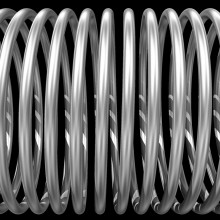
54:35 - QotW: can acid dissolve potential energy?
QotW: can acid dissolve potential energy?
Martin Buzza, University of Hull
Listener Mark wrote in to ask 'What happens to the potential energy of a compressed coil spring that is dissolved in acid?' Otis Kingsman sprung to action in speaking with Dr Martin Buzza from the University of Hull to find the answer to this question...










Comments
Add a comment